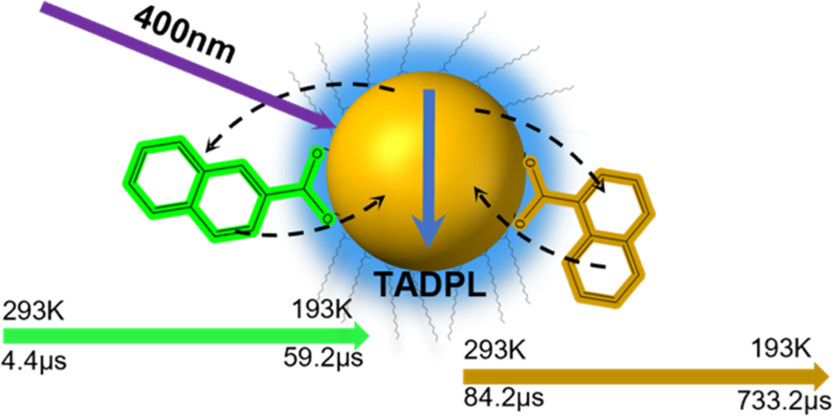Publication Alert: Engineering Long-Lived Blue Photoluminescence from InP Quantum Dots Using Isomers of Naphthoic Acid

Congratulations to Xingao and Maggie!
Abstract: Leveraging triplet excitons in semiconductor quantum dots (QDs) in concert with surface-anchored molecules to produce long-lifetime thermally activated delayed photoluminescence (TADPL) continues to emerge as a promising technology in diverse areas including photochemical catalysis and light generation. All QDs presently used to generate TADPL in QD/molecule constructs contain toxic metals including Cd(II) and Pb(II), ultimately limiting potential real-world applications. Here, we report newly conceived blue-emitting TADPL-producing nanomaterials featuring InP QDs interfaced with 1- and 2-naphthoic acid (1-NA and 2-NA) ligands. These constitutional isomers feature similar triplet energies but disparate triplet lifetimes, translating into InP-based TADPL processes displaying two distinct average lifetime ranges upon cooling from 293 to 193 K. The time constants fall between 4.4 and 59.2 μs in the 2-NA-decorated InP QDs while further expanding between 84.2 and 733.2 μs in the corresponding 1-NA-ligated InP materials, representing a 167-fold time window. The resulting long-lived excited states enabled facile bimolecular triplet sensitization of 1O2 phosphorescence in the near-IR and promoted sensitized triplet–triplet annihilation photochemistry in 2,5-diphenyloxazole. We speculate that the discovery of new nanomaterials exhibiting TADPL lies on the horizon as myriad QDs can be readily derivatized using isomers of numerous classes of surface-anchoring chromophores yielding precisely regulated photophysical properties.
- Categories:


